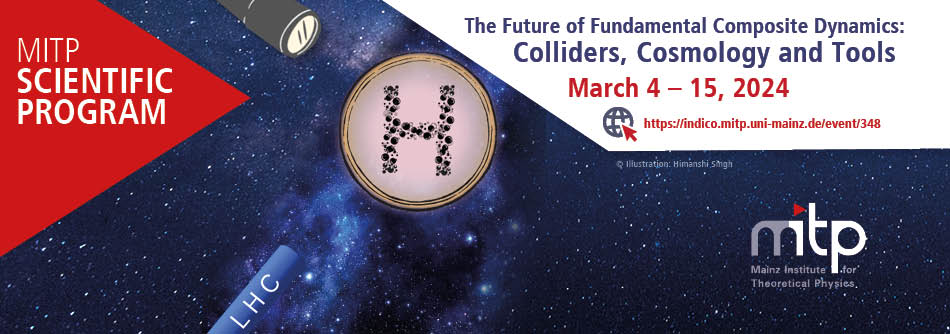The Standard Model can describe the observed most of the observed data up to energies in the TeV range. Despite this impressive success, there are several reasons to search for new physics beyond the Standard Model. Many extensions of the Standard Model have been proposed in the past years, mainly focused on the naturalness of the electroweak scale and the Dark Matter puzzle: supersymmetry, technicolor, and composite Higgs models are among the most popular. However, the simplest realizations often predict the presence of QCD-coloured states at a mass around the TeV, which have not been found at the LHC.
In the current situation, models based on composite dynamics play a special role. The mass of a composite Higgs and Dark Matter are generated dynamically, hence avoiding hierarchy issues, while new composite states may arise at the multi-TeV scale, hence hard to probe directly at the LHC. Modifications in the Higgs couplings are predicted at the level of a few percent which can be probed to some extent in the high luminosity phase at the LHC and below 1% at at e+e- Higgs factories (FCC-ee/CEPC or ILC). Other pNGBs, which are common in microscopic realizations of composite Higgs models, provide the most natural candidates for BSM resonances at or below the TeV scale. Remarkably, fundamental models of strong dynamics usually predict other non-pNGB resonances to be fairly heavy, naturally expected at masses in the multi-TeV range, a natural target for future high energy colliders. Another generic feature of models of strong dynamics around TeV scale is that they predict the occurrence of multiple phase transitions in the early Universe which can be probed by gravitational waves at planned future experiments in space (LISA) and on Earth (Einstein Telescope).
During the two weeks of this Scientific Program, we will discuss the development of strong dynamics in new physics applications for collider physics, dark matter, gravitational waves and cosmological implications. Furthermore, particular attention will be dedicated to the development of tools apt to study these models at current and future experiments, with special focus given to applications of machine learning techniques.
The main topics we plan to cover can be summarized via the four Working Groups:
A) Status of phenomenological models applied to the Higgs sector, Dark Matter, and new applications.
B) Composite dynamics as a benchmark scenario for the FCC-ee feasibility study, including the CEPC, and prospects at future programmes (FCC-hh, CLIC, ILC, C3, muon collider...).
C) Cosmology of composite dynamics, with focus on the production of gravitational waves during multiple cosmological phase transitions. Impact for the design of future detectors, like LISA and the Einstein Telescope.
D) Intelligent computational tools for composite dynamics, collider phenomenology and Cosmology.

